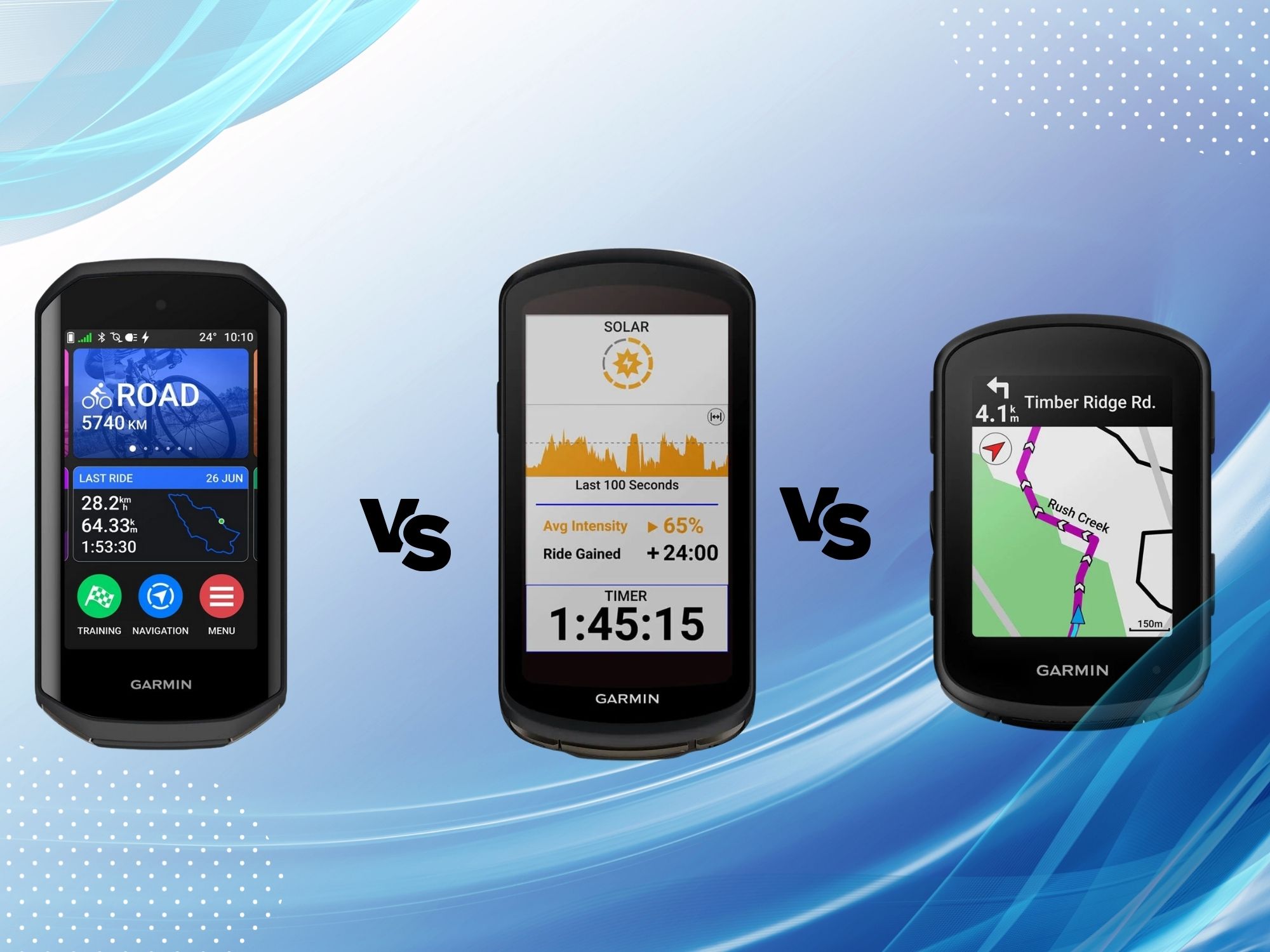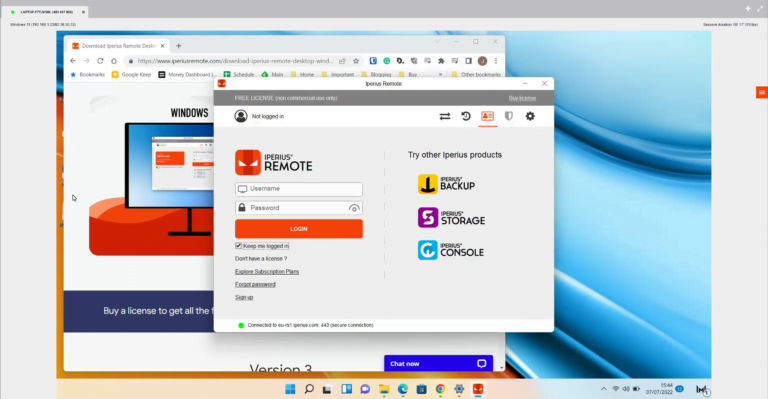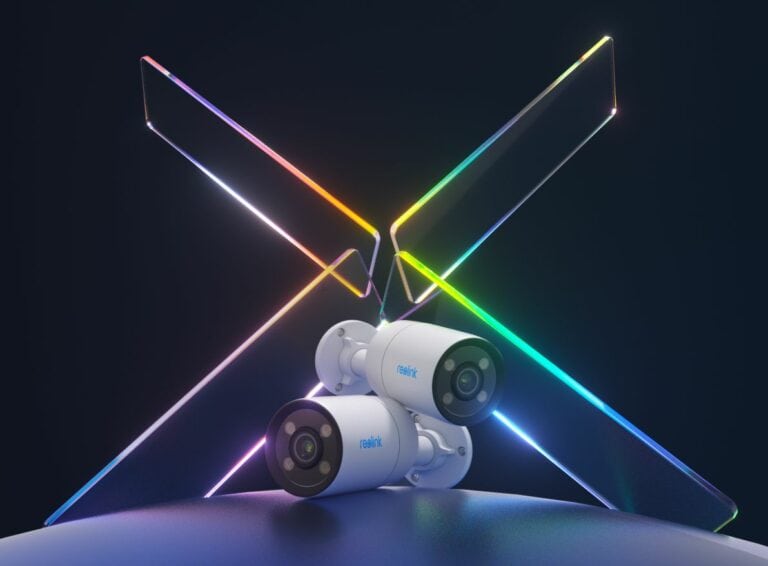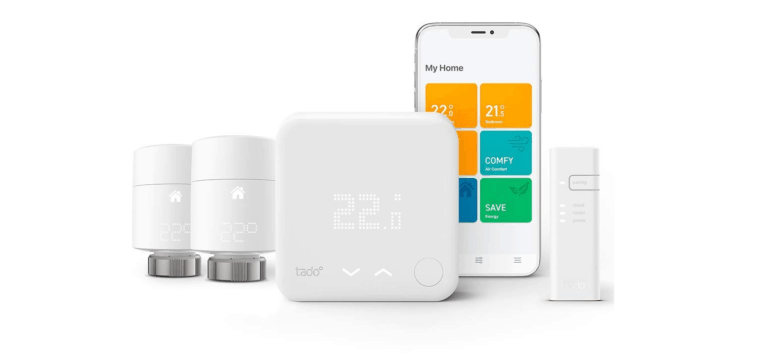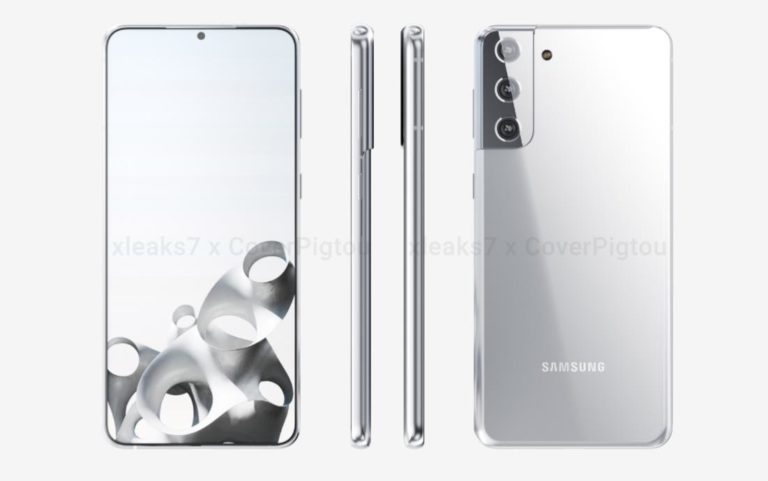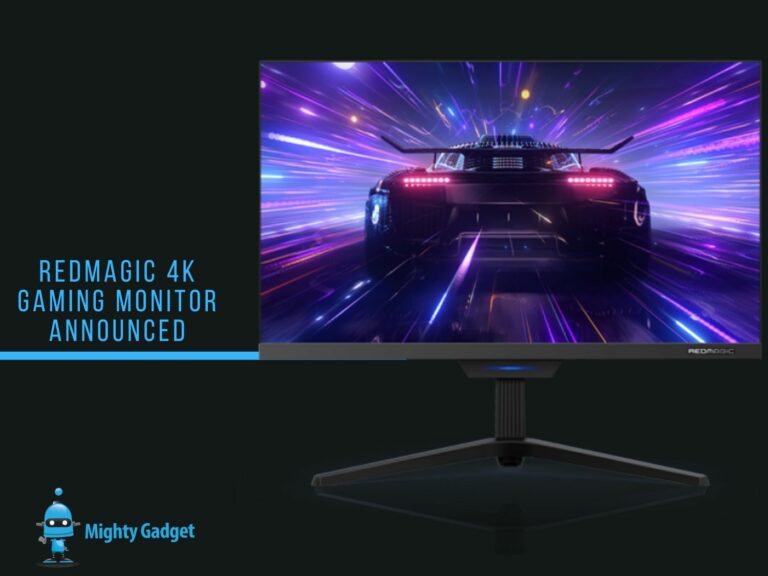Any links to online stores should be assumed to be affiliates. The company or PR agency provides all or most review samples. They have no control over my content, and I provide my honest opinion.
A couple of days ago, Garmin launched its latest flagship bike computer, the Edge 1050.
Following the trend of their recent watches, the Edge 1050 ditches the old low-resolution transflective display and has swapped it out for an LCD display. It is a shame they haven’t used OLED as it may save a bit of battery, but LCD displays can go brighter, and with this being a bike computer, it has more space for a battery than a watch.
So what else has changed, and is the Garmin Edge 1050 worth it over the older Edge 1040 and 840?
Related Content
- What is Dual Frequency/Multiband GNSS on a Garmin Sports Watch?
- Garmin Forerunner 265 vs Forerunner 255 Specification
- Garmin Forerunner 965 vs Forerunner 955 Specification
- Garmin Venu Sq 2 vs Venu Sq vs Venu 2 vs Fitbit Sense 2 Compared
- Garmin Epix 2 Review
Garmin Edge 1050 vs Edge 1040 vs Edge 840 Specification
| Garmin Specification | Edge 1050 | Edge 1040 | Edge 840 |
| Garmin Pay | Yes | No | No |
| General | |||
| Dimension | 60.2 x 118.5 x 16.3 mm | 59.3 x 117.6 x 20.0 mm | 57.8 x 85.1 x 19.6 mm |
| Weight | 161 g | 126 g | 84.8 g |
| Water Rating | IPX7 | IPX7 | IPX7 |
| Touchscreen | Yes | Yes | Yes |
| Display Type | Liquid crystal | Transflective TFT | Transflective TFT |
| Display Size | 88.9 mm diagonal | 88.9 mm diagonal | 66 mm diagonal |
| Display Resolution | 480 x 800 pixels | 282 x 470 pixels | 246 x 322 pixels |
| Colour Display | Yes | Yes | Yes |
| Built-In Speaker: | Yes | No | No |
| Battery Type | Rechargeable lithium-ion | Rechargeable lithium-ion | Rechargeable lithium-ion |
| Battery Life | Up to 20 hours demanding use | 35 hours | Up to 26 hours |
| Up to 60 hours, battery save mode | |||
| Battery Save Mode | Yes | Yes | Yes |
| In-Ride Power Compatible (Power Mount And Garmin Charge Battery Pack) | Yes | Yes | Yes |
| Maps & Memory | |||
| Ability To Add Maps | Yes | Yes | Yes |
| Wi-Fi Map Manager | Yes | No | No |
| Basemap | Preloaded Garmin cycle map | Preloaded Garmin cycle map | Preloaded Garmin cycle map |
| Storage And Power Capacity | 64 GB internal memory only | 32 GB internal memory | 32 GB |
| Waypoints/Favourites/Locations | 200 | 200 | 200 |
| Navigation Routes | 100 Courses | 100 Courses | 100 Courses |
| History | Up to 200 hours | Up to 200 hours | Up to 200 hours |
| Sensors | |||
| Gps | Yes | Yes | Yes |
| Glonass | Yes | Yes | Yes |
| Galileo | Yes | Yes | Yes |
| Barometric Altimeter | Yes | Yes | Yes |
| Gyroscope | Yes | Yes | Yes |
| Accelerometer | Yes | Yes | Yes |
| Ambient Light Sensor | Yes | Yes | Yes |
| Multi-Band Gnss | Yes | Yes | Yes |
| Magnetometer | Yes | Yes | Yes |
| Daily Smart Features | |||
| Connectivity | Bluetooth, ANT+, Wi-Fi | Bluetooth, ANT+, Wi-Fi | Bluetooth, ANT+, Wi-Fi |
| Connect Iq™ (Downloadable Watch Faces, Data Fields, Widgets And Apps) | Yes | Yes | Yes |
| On-Device Connect Store | Yes | Yes | Yes |
| Smart Notifications | Yes | Yes | Yes |
| Text Response/Reject Phone Call With Text (Android Only) | Yes | Yes | Yes |
| Weather Forecasts | Yes | Yes | Yes |
| Realtime Settings Sync With Garmin Connectâ Mobile | Yes | Yes | Yes |
| Controls Smartphone Music | Yes | Yes | Yes |
| Virb Camera Remote | Yes | Yes | Yes |
| Smart Trainer Control | Yes | Yes | Yes |
| Smartphone Compatibility | iPhone, Android | iPhone, Android | iPhone, Android |
| Safety And Tracking Features | |||
| Assistance | Yes | Yes | Yes |
| Livetrack | Yes | Yes | Yes |
| Grouptrack | Yes | Yes | Yes |
| Group Ride (Cycling) | Yes | Yes | Yes |
| Groupride Competitions And Awards | Yes | No | No |
| Rider-To-Rider Messaging | Yes | Yes | Yes |
| Incident Detection | Yes (includes off-road) | Yes (includes off-road) | Yes (includes off-road) |
| Groupride Incident Detection | Yes | No | No |
| Community Generated Hazards Reporting | Yes | No | No |
| Find My Edge | Yes | Yes | Yes |
| Bike Alarm | Yes | Yes | Yes |
| Weather Alerts | Yes | Yes | Yes |
| Inreach Compatible | Yes | Yes | Yes |
| Activity Tracking Features | |||
| Calories Burned | Yes | Yes | Yes |
| Intensity Minutes | Yes | Yes | Yes |
| Training, Planning And Analysis Features | |||
| Customisable Screen(S) | Yes | Yes | Yes |
| Downloadable Training Plans | Yes | Yes | Yes |
| Daily Workout Suggestions | Yes (event specific) | Yes | Yes |
| Primary And Secondary Workout Targets | Yes | Yes | Yes |
| Auto Pause | Yes | Yes | Yes |
| Interval Training | Yes | Yes | Yes |
| Advanced Workouts | Yes | Yes | Yes |
| Auto Lap | Yes | Yes | Yes |
| Vo2 Max | Yes | Yes | Yes |
| Training Status – Cycling | Yes | Yes | Yes |
| Training Load – Cycling | Yes | Yes | Yes |
| Training Load Focus – Cycling | Yes | Yes | Yes |
| Real-Time Stamina – Cycling | Yes | Yes | Yes |
| Cycling Ability Analysis | Yes | Yes | Yes |
| Course Demands Analysis | Yes | Yes | Yes |
| Training Effect | Yes | Yes | Yes |
| Recovery Advisor | Yes | Yes | Yes |
| Virtual Partner | Yes | Yes | Yes |
| Race An Activity | Yes | Yes | Yes |
| Segments | Yes | Yes | Yes |
| Auto Scroll | Yes | Yes | Yes |
| Physio Trueup | Yes | Yes | Yes |
| Unified Training Status | Yes | Yes | Yes |
| Outdoor Recreation | |||
| Climbpro Ascent Planner – Cycling | Yes | Yes | Yes |
| Climbpro – Courses | Yes | Yes | Yes |
| Climbpro – Free Riding | Yes | Yes | Yes |
| Cycling Features | |||
| Courses | Yes | Yes | Yes |
| Alerts (Triggers Alarm When You Reach Goals Including Time, Distance, Heart Rate Or Calories) | Yes | Yes | Yes |
| Ftp (Functional Threshold Power) | Yes | Yes | Yes |
| Garmin Cycle Map (Routable Cycling-Specific Street Map) | Yes | Yes | Yes |
| Mtb Dynamics | Yes | Yes | Yes |
| Compatible With Variaâ Radar (Rear-Facing Radar) | Yes | Yes | Yes |
| Compatible With Varia Radar Camera | Yes | Yes | Yes |
| Compatible With Variaâ Lights | Yes | Yes | Yes |
| Power Meter Compatible | Yes | Yes | Yes |
| On-Device Course Creator | Improved | Yes | Yes |
| On-Device Location Search | Yes | Yes | Yes |
| Power Guide | Yes | Yes | Yes |
| Trendline Popularity Routing – Cycling | Yes | Yes | Yes |
| Popularity Heatmap | Yes | Yes | Yes |
| Cycling Dynamics Compatible | Yes | Yes | Yes |
| Integrated Trailforks Trail Data | Yes | Yes | Yes |
| Ebike Smart Range Routing | Yes | Yes | Yes |
| Connectivity | |||
| Edge Remote | Yes | Yes | Yes |
| Varia Remote | Yes | Yes | Yes |
| Ant Electronic Shifting | Yes | Yes | Yes |
| Shimano Di2 Synchro Shift Integration | Yes | Yes | Yes |
| Sram Axs Integration | Yes | No | No |
| Extended Display (Allows A Garmin Watch To Share Data Screens On Edge®) | Yes | Yes | Yes |
Garmin Edge 1050 vs Edge 1040 vs Edge 840 Key Differences
The key differences and similarities among the Garmin Edge 1050, Edge 1040, and Edge 840 include:
- Garmin Pay: Only the Edge 1050 supports Garmin Pay, allowing for contactless payments directly from the device.
- Dimensions and Weight: The Edge 1050 is the largest and heaviest, measuring 60.2 x 118.5 x 16.3 mm and weighing 161 g. The Edge 1040 is slightly smaller and lighter at 59.3 x 117.6 x 20.0 mm and 126 g, while the Edge 840 is the most compact and lightest at 57.8 x 85.1 x 19.6 mm and 84.8 g.
- Display: The Edge 1050 boasts the largest and highest-resolution display (88.9 mm diagonal, 480 x 800 pixels), compared to the Edge 1040 (88.9 mm diagonal, 282 x 470 pixels) and Edge 840 (66 mm diagonal, 246 x 322 pixels).
- Battery Life: The Edge 1040 leads with up to 35 hours of use, extending to 60 hours in battery save mode. The Edge 840 follows with up to 26 hours, and the Edge 1050 offers up to 20 hours of demanding use or 60 hours in battery save mode.
- Storage: The Edge 1050 has 64 GB of internal memory, doubling the 32 GB found in both the Edge 1040 and Edge 840.
- Built-In Speaker: Unique to the Edge 1050, enhancing navigation with voice directions.
Garmin Edge 1050 vs Edge 1040 vs Edge 840 Display
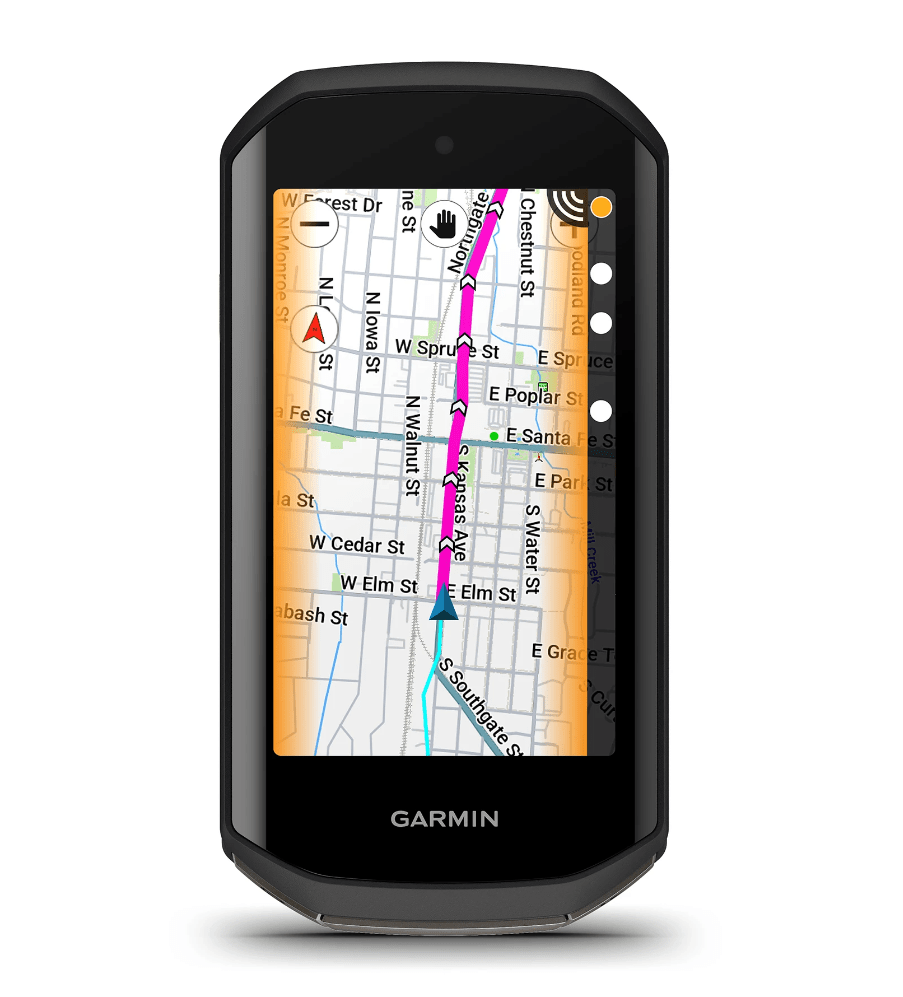
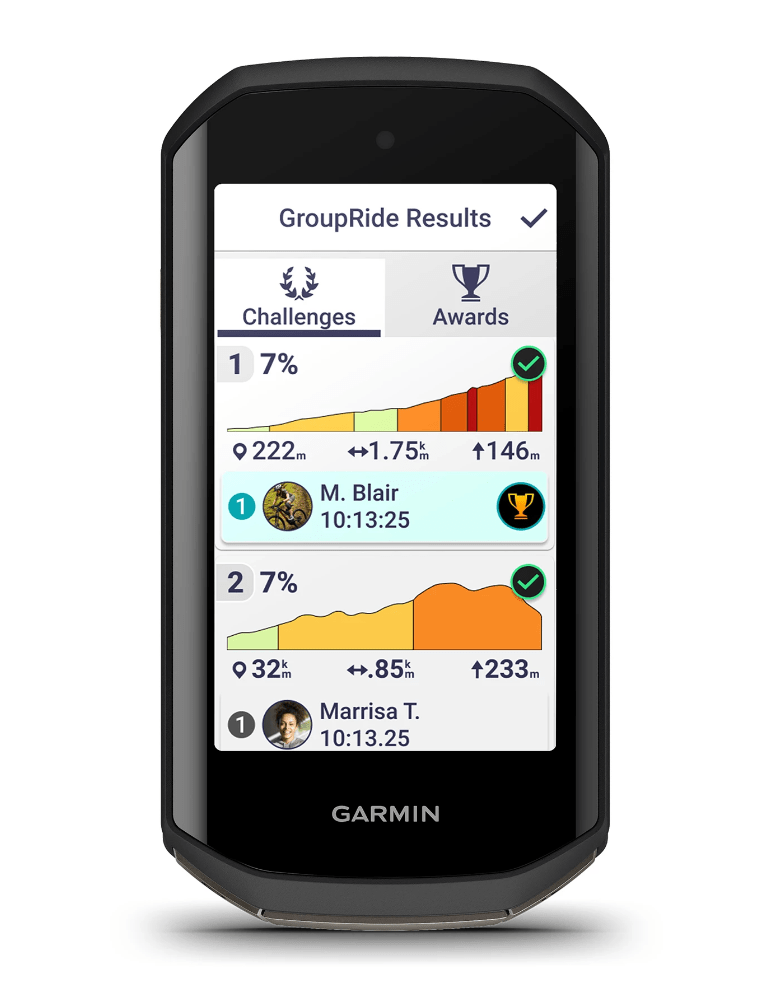

The Edge 1050 boasts the largest and most advanced display of the three. It features an 88.9mm diagonal liquid crystal touchscreen with a resolution of 480×800 pixels. The Edge 1040 matches the 1050’s screen size but uses a transflective TFT display with a lower 282×470 pixel resolution. The Edge 840, being more compact, has a 66mm diagonal transflective TFT display with 246×322 pixels.
In terms of physical dimensions, the Edge 1050 is the largest at 60.2 x 118.5 x 16.3mm, followed by the 1040 at 59.3 x 117.6 x 20.0mm, and the 840 is the most compact at 57.8 x 85.1 x 19.6mm.
Garmin Edge 1050 vs Edge 1040 vs Edge 840 Battery Life & Solar
The Edge 1050 offers up to 20 hours of battery life under demanding use and up to 60 hours in battery save mode.
The Edge 1040 boasts an impressive 35 hours of battery life and 70 hours with a battery saver.
The Edge 840 can last up to 26 hours, but the battery saver performance is not stated.
All three models are compatible with in-ride power sources like the Power Mount and Garmin Charge Battery Pack.
Both the Edge 1040 and 840 are available in solar models, which adds £70 to the cost of the Edge 840 and £100 to the Edge 1040.
The Edge 1040 is then capable of up to 45 hours with solar (adding 10 hours).
The solar on the Edge 840 extends the battery to 32 hours.
For most people, the 20-hour battery life of the Edge 1050 will be more than acceptable, but it is also a little disappointing. If you go out on a full-day ride, you will want to make sure the unit is fully charged, whereas the other solar-powered models provide more flexibility.
Navigation and Mapping
All three devices come preloaded with Garmin cycle maps and support the addition of new maps. However, the Edge 1050 introduces a new Wi-Fi Map Manager feature, making it easier to update and manage maps wirelessly. The 1050 also offers 64GB of internal storage, while the 1040 and 840 have 32GB each.
Connectivity and Smart Features
All three models support Bluetooth, ANT+, and Wi-Fi connectivity. They’re compatible with smartphones, offer smart notifications, and can control smartphone music. The Edge 1050 stands out with its built-in speaker and Garmin Pay functionality, features absent in the 1040 and 840.
Safety and Tracking
While all three devices offer basic safety features like Assistance, LiveTrack, and Incident Detection, the Edge 1050 introduces new features such as GroupRide Competitions and Awards, GroupRide Incident Detection, and Community Generated Hazards Reporting.
Training and Analysis
All three devices provide advanced training features including VO2 Max estimation, Training Status, Training Load, and ClimbPro. The Edge 1050 offers event-specific daily workout suggestions, a feature not mentioned for the other models.
Cycling-Specific Features
All three computers are compatible with various cycling accessories like power meters, Varia radar and lights. The Edge 1050 introduces improved on-device course creation and SRAM AXS integration, features not available on the 1040 and 840.
Garmin Edge 1050 vs Edge 1040 vs Edge 840 Price and Alternative Options
The Garmin Edge 1050 has an RRP of £650
The Garmin Edge 1040 Solar is priced at £630, and the standard model is £530
The Edge 840 Solar is £520, and the standard model is £450
The Edge 540, which is the same as the 840 but lacks the touch display, is currently only available without solar and is priced at £350.
As for alternative options from competing brands, you have:
- Hammerhead Karoo 2: £300
- Wahoo Elemnt Roam V2: £350
- Wahoo Elemnt Bolt V2: £250
Overall Opinion
The Edge 1050 is not the most exciting launch from Garmin. The main difference is the new 3.5” Transmissive LCD display, which is capable of 1,000 Nits brightness with a resolution 480×800.
It is a nice upgrade, but not really a reason to buy it if you have one of the older models.
The bike bell, road hazards and group ride features are nice additions. I love the idea of road hazards, but I am not sure how useful it will be. It is going to take a long time to build up a community-powered road hazard database, but I guess it will be useful for group riders.
Many of the software features are being rolled down to the 540/840/1040, so it is really just the hardware features that make a difference.
The pricing makes it challenging to make a decision on which bike computer to buy. You can get the Garmin Edge 1050 for £650 with its fancy new display and bike bell or for £20 less; you can get the Edge 1040 Solar with its superior battery, or alternatively, you can save £120 by getting the standard 1040.
As I am a tight-fisted northerner, if I was parting with my own money, I think I’d save the cash and get the standard 1040 (or even the 540/840).

